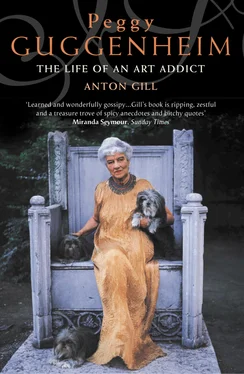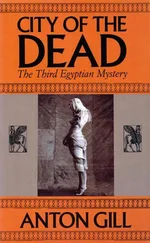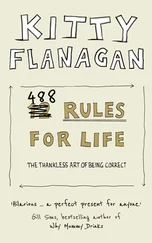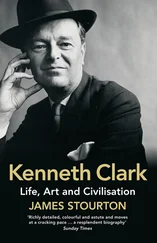Restless still, the Vails set off for another holiday, with Clotilde, Lilly and Sindbad, heading first for the Austrian Tyrol. They would spend the row-ridden summer partly with Laurence’s family and partly with Peggy’s. They went hill-walking with the Vails, which Peggy loathed, played tennis and swam. When they joined Peggy’s family poor Benita, still on her European tour with Edward, showered affection on Sindbad; her own attempts at having a child had ended in a series of miscarriages.
Finally shedding their various relatives, Peggy and Laurence made their way back to Venice with Lilly and Sindbad, and here there was a lull in the storm. Laurence knew the city well, as his father had often painted there. Throughout their relationship Peggy had a high regard for Laurence’s intelligence – something she always generously and unreservedly admired in others, thinking as she did so little of her own – and, as she responded positively to the city herself, so she responded to what he taught her about it: ‘Laurence knew every stone, every church, every painting in Venice: in fact he was its second Ruskin. He walked me all over this horseless and autoless city and I developed for it a lifelong passion.’ They started to buy antique furniture for the home they hoped they would some day have – among other things, a thirteenth-century chest, which would end up immured in a country cottage in England. Peggy conceived the idea of buying a palazzo, but was prevented from doing so because her capital remained locked in trusts. Sindbad became rather a bore when Lilly fell ill and Peggy had to look after him ‘every day instead of on Thursdays, as was my habit’.
From Venice they went to Rapallo, where they played tennis with Ezra Pound, who lived there and who had become a friend of sorts; but the place bored Peggy, and the rows with Laurence resumed. On one occasion he smashed a tortoiseshell dressing set that she had acquired after what she calls ‘months of bargaining in the Italian fashion’. Dressing sets were important to Peggy: as a child she had bought an ivory set in Paris, which had long since disappeared, and this one had been intended to replace it. Many years later, in Venice after the Second World War, she herself smashed some tortoiseshell: an anonymous male friend, wishing to patch up a quarrel he’d had with her, brought her a tortoiseshell box as a peace-offering. ‘As she took it from him,’ Maurice Cardiff recalls, ‘she remarked that if it was genuine it would be almost unbreakable. Putting her theory to the test she hurled it onto the marble floor where it predictably shattered.’
Having spent New Year in Rapallo they set off early in 1925 in a leisurely way for Paris. Peggy was pregnant again, her new baby expected in August. As they drove along the Provençal coast they came across a hamlet called Le Canadel, on the Corniche des Maures towards Cap Nègre. It was an enchanting place, and they decided that it was here they would like their home to be. As luck would have it, a tiny, primitive hotel was for sale nearby – La Croix Fleurie, which had artistic associations, since Cocteau had used to spend his winters here with his lover Raymond Radiguet. It was irresistible anyway: ‘a nice little white plaster building in the Provençal style. It had a double exterior staircase ascending to a balcony which gave access to three spacious rooms … The wing consisted of one large room with a huge fireplace and three French windows that reached to the high ceiling and gave out on a lovely terrace with orange trees and palms, forty feet above the sea.’ There may have been no telephone or electricity, but there was a mile of private beach. Impetuously they bought it, but then got cold feet about the price. They managed to wriggle out of the ensuing difficulties and got the sum reduced by a third, provided that they undertook never to use the house as an inn; and they were obliged to repudiate the right to call it La Croix Fleurie.
They returned to Paris in triumph, but as the house would not be ready for them to move into until the summer, when Peggy was expecting her baby, they put off moving until the autumn. In the meantime Peggy decided to visit Benita in New York. Laurence, by now immersed in writing what was to become Murder! Murder! , did not at first want to go, but was persuaded to join her. With them they took a selection of flower collages by Mina Loy to sell.
Mina had arrived in Paris at the turn of the century, and had returned there in 1923 after extensive travels and a chequered, romantic and sometimes tragic life had taken her to South America, Florence, Berlin and New York. Born in London in 1882, she was a highly talented poet – published in the Little Review and by McAlmon’s Contact Editions – as well as a designer and painter. Having very little money, she had to work hard to make a living without compromising her creativity. Her latest idea had been born of frequent visits to the Parisian flea-market, in those days more a place of genuine wonder than it is today, but still only if you could see the potential beyond the junk. Mina had a superb eye, and one of her aims was to train her two daughters, Fabi and Joella, to develop their own. ‘One had to buy the real thing, a piece of old lace,’ she explained, ‘or something funny, but nothing from a department store.’
In the course of several such expeditions Mina had got hold of a number of Louis-Philippe picture frames for a price well below their real value. As her biographer Carolyn Burke explains:
Her latest fantasy, devised to earn the money for a larger apartment, crossed the traditional still-life with Cubist collage. She cut leaf and petal shapes from coloured papers, layered them to form old-fashioned bouquets, and arranged these pressed flowers in découpé bowls and vases painted with meticulous attention to surface texture. These ‘arrangements’ were then backed with gold paper and set in Mina’s flea-market frames: instant antiques, they looked expensive but were made from the cheapest materials. She had created a medium that lived beyond its means.
Mina had known Eugene Vail in Paris twenty years earlier, and had got to know Laurence and Clotilde in Florence – it was they who had encouraged her to go to New York to sell her designs. Once in America she had played a role, though not one to her liking, in Laurence’s play What D’You Want? , and had met and fallen in love with the extraordinary pugilist-poet Arthur Cravan (who claimed to be a nephew of Oscar Wilde, a relationship that was never proven). She later followed him to Mexico, where they married. Towards the end of 1918 Cravan, as erratic as he was romantic, conceived the plan of purchasing a boat and sailing it to Chile. He took up a collection and bought a hulk, which he proceeded to patch up. When it was ready he went for a test sail in the Gulf of Mexico, and was never seen again. Whether he was wrecked or whether he ran away is not known, but he left behind a pregnant wife. Mina was still grieving for him when the Vails agreed to take her work to New York for her and try to sell it in 1925.
Laurence invented a title for the collection, ‘Jaded Blossoms’, and Peggy organised exhibitions for it at department stores and art galleries, as well as having a showing of Mina’s drawings and portraits on Long Island. The catalogue, written anonymously by Laurence, boasted of Mina’s grand English background – in fact it was relatively humble. But the portraits sold, as did the Jaded Blossoms, and the reviews were good. More importantly for Peggy, she had discovered a gift: although most of the clients were friends or members of her extended family, she found she was not only quite good at selling, but had an appetite for it. There was no need for her to make use of her gift, because she had money already, and in any case her upbringing militated against her working seriously in any kind of commerce. That was a field better left to the Guggenheim and Seligman men.
Читать дальше












